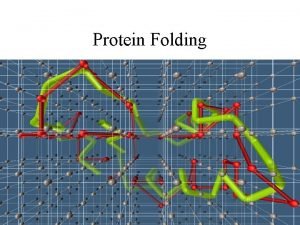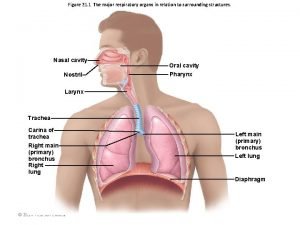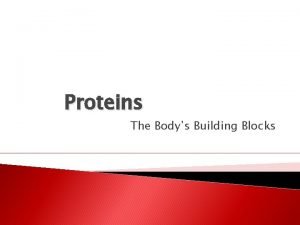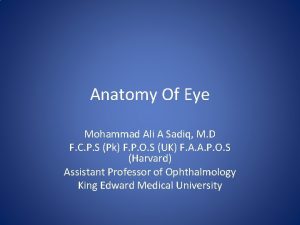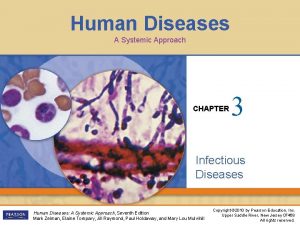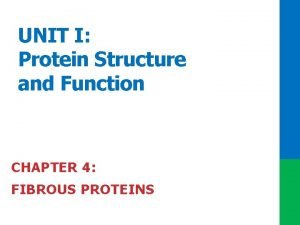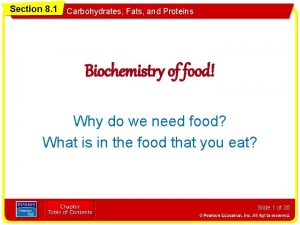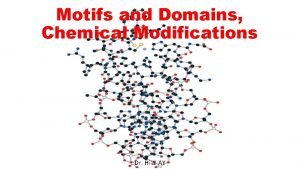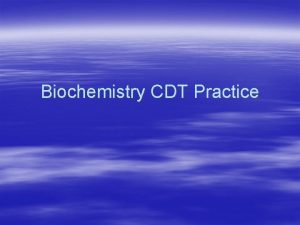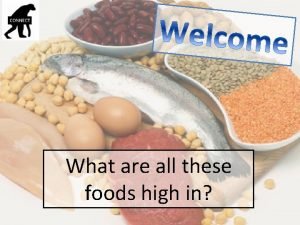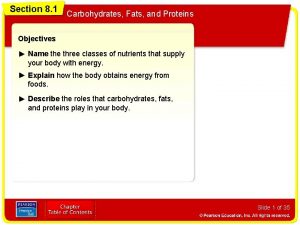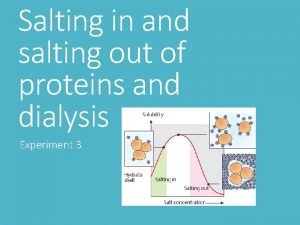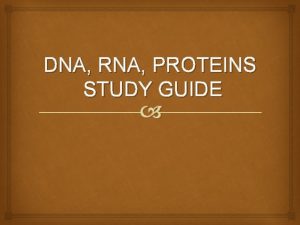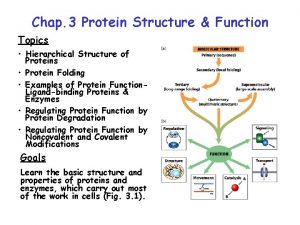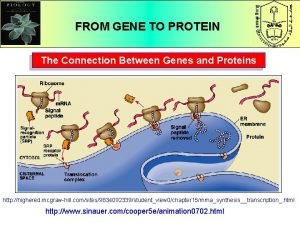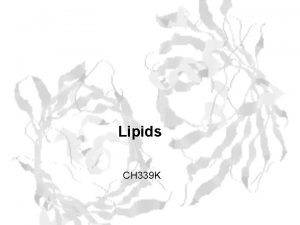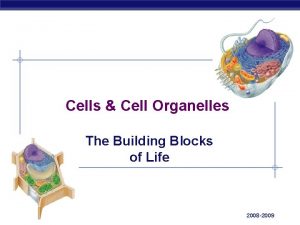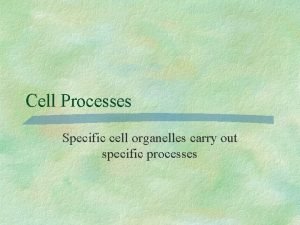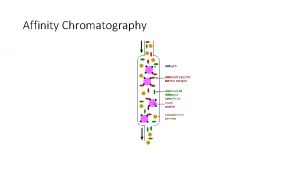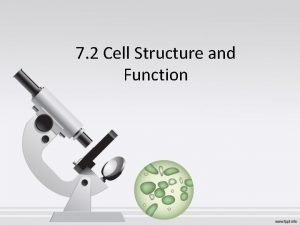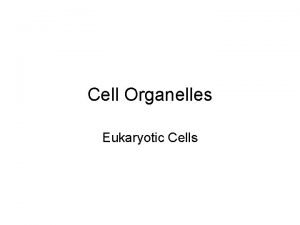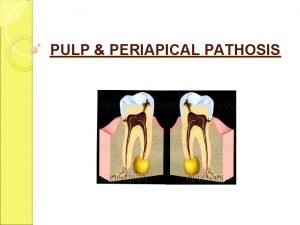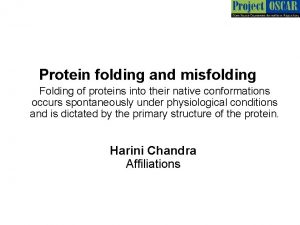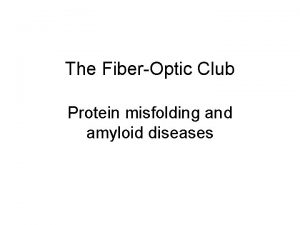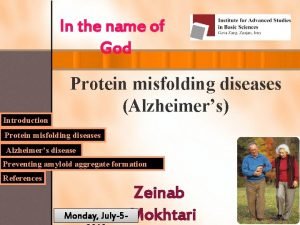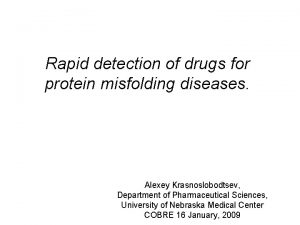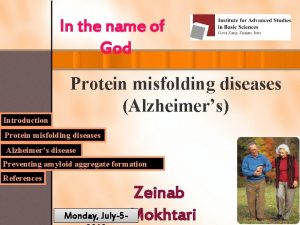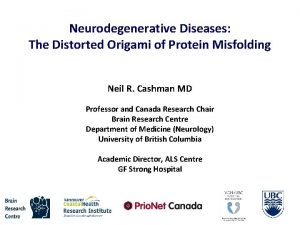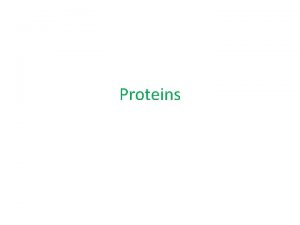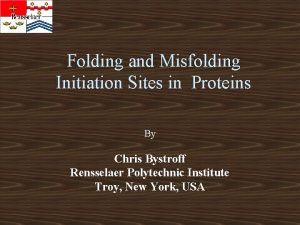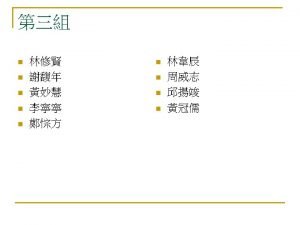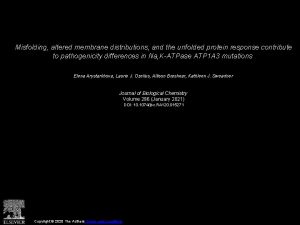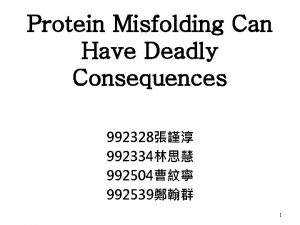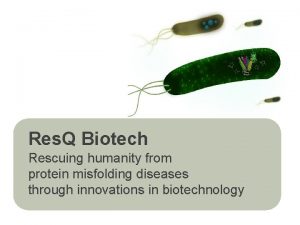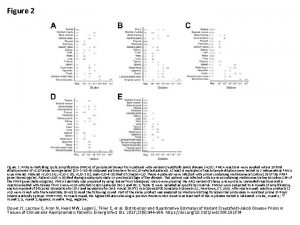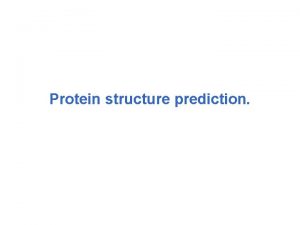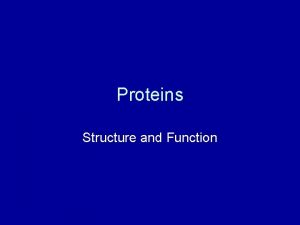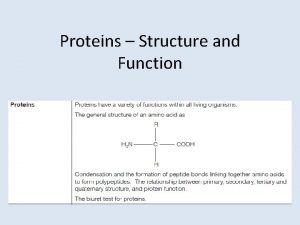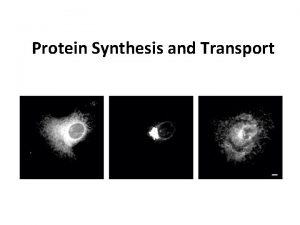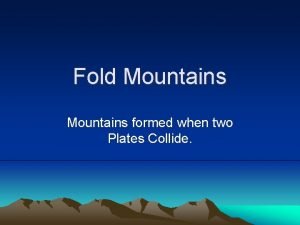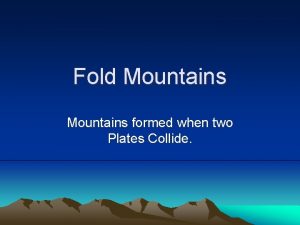PROTEIN MISFOLDING AND HUMAN DISEASES How Proteins fold










































- Slides: 42

PROTEIN MISFOLDING AND HUMAN DISEASES ü How Proteins fold and why they misfold ü Role of Molecular Chaperones in Protein Folding ü ORGANELLE-SPECIFIC PROTEIN QUALITY CONTROL SYSTEMS AND PROTEIN MISFOLDING DISEASES ü Mechanisms and Link to Disease ü Molecular chaperones in protein folding and proteostasis ü The amyloid state and its association with protein misfolding diseases ü Antibodies and protein misfolding: From structural research tools to therapeutic strategies

ü PROTEIN MISFOLDING DISEASE: GAIN-OF-FUNCTION AND LOSS-OF-FUNCTION DISEASES ü Aggregation of Copper–Zinc Superoxide Dismutase in Familial ALS ü Protein Misfolding in Alzheimer Disease: The Aβ oligomer hypothesis for synapse failure and memory loss in Alzheimer’s disease ü Mechanisms of emphysema in α 1 -antitrypsin deficiency: molecular and cellular insights ü Protein Misfolding and Aggregation in Cataract Disease ü Techniques for Monitoring Protein Misfolding and Aggregation in Vitro and in Living Cells ü Identifying and validating biomarkers for Alzheimer’s disease

Protein folding and misfolding

INTRODUCTION The function of most cellular proteins is dependent on their three-dimensional structure, which is acquired through folding of the polypeptide chain coded from the nuclear genome. Changes in the polypeptide chain, either resulting from inherited or acquired gene variations or from abnormal amino acid modifications, may change the folding process and give rise to misfolding of the protein.

Depending on the nature of the protein itself, the cellular compartment in which the misfolding occurs, the activity of the folding and degradation machineries as well as interacting genetic factors and the cell and environmental conditions, the consequences of the misfolding may be quite different

However, despite this diversity, a large number of very different diseases, from early-onset inborn errors of metabolism to late-onset neurodegenerative diseases, can be viewed as protein misfolding diseases, often called conformational diseases. On this basis, a common framework related to the molecular pathogenesis and cell pathologic mechanisms in these very different diseases is emerging.

Aims of these lessons We introduce theory of protein folding and misfolding in general and mention the emerging ways to predict consequences of amino acid alterations We introduce the concept of protein quality control (PQC) and discuss the various compartment specific PQC systems as well as the molecular pathogenesis of some representative misfolding diseases originating in the various compartments.

General facts on protein folding Important elements for protein folding: The amino acid sequence The right cellular environment (T , P , p. H , etc…) The perfect balance between the various folding states A fully functional Protein Quality Control (PQC) system (Chaperones, proteasome unit )

Causes of misfolding and protein aggregation How protein aggregates form? Change in cellular conditions more misfolded proteins the PQC system is overwhelmed aggregation is favored Aggregation is thought to be set in by protein segments containing hydrophobic amino acids residues, β-sheet predisposition and low net charge.

Causes of misfolding and protein aggregation States accessible to a protein molecule Free-energy folding landscape for chaperone-mediated protein folding

Causes of misfolding and protein aggregation Protein aggregation is a 2 -stage event 1. The nucleation proteins start attaching reversibly to a growing nucleus 2. Proteins attach irreversibly to the nucleus until it becomes a larger aggregate.

Cellular consequences of protein aggregation Loss-of-function pathogenesis: if misfolded proteins are prematurely degraded by PQC system protein deficiency disease Gain-of-function pathogenesis: if misfolded proteins are not eliminated but accumulated instead disease pathology toxicity Some diseases display both pathogenic mechanisms.

Cellular consequences of protein aggregation + the slowing down of polypeptides translation

Protein-misfolding diseases Include conditions where a protein: fails to fold correctly (cystic fibrosis, Marfan syndrome, amyotrophic lateral sclerosis) is not stable enough to perform its normal function (many forms of cancer) fails to be correctly trafficked (familial hypercholesterolemia, α 1 -antitrypsin deficiency) forms insoluble aggregates that deposit toxically (neurodegenerative diseases: Alzheimer’s, type II diabetes, Parkinson’s and many more)

The fundamental mechanism of protein folding The concept of an energy landscape

Protein Folding






Protein folding models As Anfinsen showed the amino acid sequence of a polypeptide chain contains all necessary information determining the three-dimensional functional structure of a given protein. This means that the native state has to be thermodynamically stable and the protein must rapidly find the native state. If a protein searches through all possible conformations in a random fashion until it finds the conformation with the lowest free energy it will take an enormous amount of time.

Imagine a polypeptide chain with 100 residues and every residue has 2 possible conformations. The protein has 2100 (or 1030 ) possible conformations, and if it converts one conformation into another in the shortest possible time (maybe 10 -11 s) the time required is 1011 years. A protein however reaches its native fold in 10 -3 to 103 s both in vitro and in vivo. The Levinthal paradox states that a random search for the final conformation would take millions of years

To overcome this obstacle, nature uses a number of biochemical “rules” and has evolved some assisting components facilitating the folding processes, the so-called molecular chaperones (see later)

Molecular chaperones assist the folding by protecting the protein during the folding process and keeping it away from misfolding, which may lead to aggregation (see later). The target for chaperones is unfolded and partially folded polypeptide chains with exposed stretches of hydrophobic amino acids that are usually inside in the core of folded proteins. Proteins with exposed hydrophobic stretches are reversibly bound to and released from the chaperones. Many chaperones have an ATPase domain that orchestrates conformational changes, switching the molecule between high and low binding affinity states


ϕ and ψangles The planarity of the peptide bond means that there are only two degrees of freedom per residue for the peptide chain. Rotation is allowed about the bond linking the αcarbon and the carbon of the peptide bond also about the bond linking the nitrogen of the peptide bond and the adjacent α-carbon. The angle about the Cα-N bond is denoted by the Greek letter ϕ (phi), and that about the Cα-C is denoted by ψ (psi).

The driving force of protein folding is the search for a conformation with lower free energy than the previous one. The various lower energy states can be separated by barriers of higher energy, and to overcome these barriers chaperone assistance may be required. Biophysical measurements and computer simulations have revealed that many of the local elements of protein structures can be generated very rapidly; for example, individual αhelices are able to form in less than 100 ns, and β-turns in as little as 1 μs. Indeed, the folding in vitro of some of the simplest proteins, is completed in less than 50 μs

A certain hierarchy of interactions seems to exist between residues for the first part of the folding process, the so-called nucleation- condensation process, which speeds up the folding through a number of transition states characterized by the presence of interatomic interactions also present in the native protein

To picture protein folding it has been suggested a topological landscape representing different energy levels In this model the process of folding is described as a constant striving toward minimal free energy with the native structure of the protein being the conformation with the lowest energy level, the global minimum of the landscape

The landscape is drawn as a funnel shape in a three-dimensional system with the free energy on the y axis and the conformational space or entropy as a twodimensional projection on the x and z axes.

Because the free energy of a protein is a function of its conformation defined by the interactions between the amino acid residues, even small alterations in the amino acid chain may change the surface of the landscape, leading to the possible formation of new local free energy minima resulting in a different stable structure of the protein, which may be prone to aggregation.

To refine the concept of energy folding landscapes to include the aggregation tendency, which may be aggravated by extrinsic factors, such as high protein concentration and elevated temperature, in the living cell, one can imagine a landscape with two deep valleys

Free-energy folding landscape for chaperone-mediated protein folding: hypothetical landscape of all possible protein conformations pictured with higher altitude symbolizing higher free energy and entropy. Chaperones iteratively bind and release their substrates, each time raising the free energy and enabling escapes from wrong folding pathways, indicated by the “Unfolding” arrow. Eliminating protein by degradation occurs mainly in areas with trapped misfolding

Energy landscapes can have many different shapes and have many “hills” which represents the high energy conformations that sometimes has to be passed to reach the native state. Protein aggregates can be extremely stable, even more stable than the native protein, suggesting that the aggregated states are trapped in the kinetically deepest valleys of the landscape.

PROTEIN QUALITY CONTROL SYSTEMS In the test tube, protein folding is performed most efficiently at low protein concentrations and low temperature. In contrast, protein folding in human cells takes place at 37◦C —or higher during fever—with very high concentrations of proteins. To sustain a reasonable efficiency of protein folding in this challenging environment and to protect against the negative consequences of environmental changes, PQC systems have evolved that supervise folding, counteract aggregation, and eliminate misfolded and damaged polypeptide chains before they can exert toxic effects.

Quality control mechanism Regulation of protein folding in the ER. Many newly synthesized proteins are translocated into the ER, where they fold into their three-dimensional structures with the help of a series of molecular chaperones and folding catalysts (not shown). Correctly folded proteins are then transported to the Golgi complex and then delivered to the extracellular environment. However, incorrectly folded proteins are detected by a quality-control mechanism and sent along another pathway (the unfolded protein response) in which they are ubiquitinated and then degraded in the cytoplasm by proteasomes

Important components of these systems are comprised by molecular chaperones. Additionally, the PQC systems contain specialized intracellular proteases and accessory factors that regulate the activity of chaperones and proteases or provide communication between the various components.

Folding, holding and unfolding chaperones Although there is some overlap and certain chaperones are able to fulfill several functions, one can distinguish between folding chaperones, holding chaperones, and unfolding chaperones. Folding chaperones promote folding, whereas holding chaperones, like the small heat-shock proteins lacking an ATPase activity, reversibly bind misfolded proteins. They need to transfer their substrates to folding chaperones to accomplish folding. Unfolding chaperones typically contain one or two so-called AAA+ domains that harbor an ATPase, and are able to unfold misfolded proteins, either for degradation or to give them a new start for folding

Proteases of PQC systems The proteases of PQC systems have a particular structure secluding the proteolytically active sites inside cavities that are not accessible for folded proteins To be degraded, proteins must first be fully unfolded before they are injected into the proteolytic cavities, where they are processively degraded into small peptides. This is typically accomplished by AAA+ domain containing unfolding chaperones.

Functioning of protein quality control (PQC) systems. PQC systems manage the pool of unfolded and partially folded conformations (center). Folding chaperones promote folding, holding chaperones maintain solubility, and unfolding chaperones disaggregates or unfold misfolded proteins and inject them into proteolytic chambers of PQC proteases

The compartmentation of the cellular PQC systems
 How do proteins fold
How do proteins fold Rima glottidis
Rima glottidis Vestibular folds
Vestibular folds Protein deficiency diseases
Protein deficiency diseases A thin fold of skin that covers and protects the human eye
A thin fold of skin that covers and protects the human eye Carrier vs channel proteins
Carrier vs channel proteins Protein-protein docking
Protein-protein docking Human diseases a systemic approach
Human diseases a systemic approach Most abundant protein in human body
Most abundant protein in human body Section 8-1 carbohydrates fats and proteins answer key
Section 8-1 carbohydrates fats and proteins answer key Motifs and domains of proteins
Motifs and domains of proteins Organic compounds such as proteins and starches are too
Organic compounds such as proteins and starches are too Lbv food examples
Lbv food examples Section 8-1 carbohydrates fats and proteins answer key
Section 8-1 carbohydrates fats and proteins answer key Salting out proteins
Salting out proteins Biological function of protein ppt
Biological function of protein ppt Dna rna and proteins study guide answers
Dna rna and proteins study guide answers Protein structure
Protein structure What is the connection between genes and proteins
What is the connection between genes and proteins Integral and peripheral proteins
Integral and peripheral proteins Amidomalonate synthesis mechanism
Amidomalonate synthesis mechanism Endoplasmic reticulum factory part or worker
Endoplasmic reticulum factory part or worker Integral and peripheral proteins
Integral and peripheral proteins Difference between affinity and ion exchange chromatography
Difference between affinity and ion exchange chromatography Nuclear pores function
Nuclear pores function Correction factor insulin
Correction factor insulin Cilia analogy
Cilia analogy Modern lifestyle and hypokinetic diseases
Modern lifestyle and hypokinetic diseases Venn diagram communicable and noncommunicable diseases
Venn diagram communicable and noncommunicable diseases Section 19-3 diseases caused by bacteria and viruses
Section 19-3 diseases caused by bacteria and viruses Define a primary skin lesion and list three types
Define a primary skin lesion and list three types Chapter 6 musculoskeletal system
Chapter 6 musculoskeletal system Chapter 24 sexually transmitted diseases and hiv/aids
Chapter 24 sexually transmitted diseases and hiv/aids Chapter 22 genetics and genetically linked diseases
Chapter 22 genetics and genetically linked diseases Chapter 21 mental health diseases and disorders
Chapter 21 mental health diseases and disorders Chapter 17 reproductive system diseases and disorders
Chapter 17 reproductive system diseases and disorders Chapter 15 nervous system diseases and disorders
Chapter 15 nervous system diseases and disorders What conditions do fungal organisms favor for growth
What conditions do fungal organisms favor for growth Seborrheic keratoses
Seborrheic keratoses In what situation should a nail service not be performed?
In what situation should a nail service not be performed? Certain infectious and parasitic diseases
Certain infectious and parasitic diseases Cardiovascular system diseases and disorders chapter 8
Cardiovascular system diseases and disorders chapter 8 Pulp pathosis
Pulp pathosis
